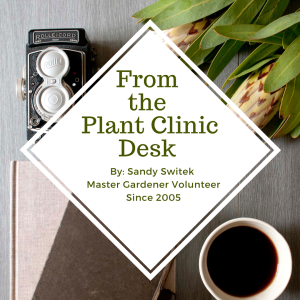For the last 25 years, April has been Water Conservation Month in Florida.
This is especially important this year, as we are in a drought.
While half of Osceola is only in a moderate drought, the other half is severe. Seminole County reports that while the percentage of our sparse rainfall that reaches the aquifer is 9%, their pumping rate is 25%. Obviously, it is a good idea to try not to waste the little rain that we do get.
Water usage in Florida
Most sources agree that outdoor watering is responsible for 50 to 80% of all water usage in Florida, some of these reports even suspect that lawns alone are responsible for 50% of it. So, this week we will look at ways to reduce our water usage on the grass, while maintaining its health. A fringe benefit of this is the possibility of receiving lower water bills.
Tips
- The first tip is for those who don’t yet have a lawn or need to replace one. While St. Augustine grass is required in some communities, Bahia grass can recover from lack of water better than St. Augustine can.
- Next, follow all the watering restrictions. If followed correctly, this schedule should provide adequate water for your lawn. Watering in early morning between 6am and 10am reduces evaporation without causing fungal disease. Daytime watering can result in evaporation before the roots even get much of the water. The correct amount is 1/2 to 3/4 inch per watering. Tuna cans can be placed in various zones to measure your water while the irrigation is running. If it exceeds 3/4″, you can reduce the time that it runs. Here is a video on calibrating your system Your Florida Lawn – How to Calibrate Your Sprinklers
-
Make sure that your irrigation system doesn’t have leaks or damaged sprinkler heads. Also check to see if your system is spraying down the road and the driveway. That would be kind of like throwing money into the street.
- Either turn off irrigation when it does rain or use a rain sensor placed in a sunny area with no obstruction by trees or buildings. This can automatically turn the system off while it is raining.
Cultural Practices

Next, there are some cultural practices which can help your lawn to stand up to a drought. These are sometimes not thought of by homeowners or professionals.
- First, reduce fertilization during a drought, or delay it until conditions improve. The lawn does not need to be growing quickly when it is struggling to survive. Also, some fertilizers have a high salt content, which can burn grass. Use a slow-release fertilizer when feeding.
- Drought-stressed lawns can be burned by weed killers during dry times. These weed killers can put further stress on the grass and make it unable to compete with new weeds. Spot treating for weeds is a better idea and can resume when rains start again.
- The lawn will tolerate drought better if it can develop deeper roots. This can be accomplished by watering the prescribed amount all at once. Short frequent watering can result in shorter roots which cannot find water during dry periods.
- Another way to help the grass get deeper roots is to mow at the highest setting. This allows the lawn to have better photosynthesis and more storage of carbohydrates. If mowing height is not already at the max, raise it up during dry weather.
- Wait until parts of the lawn show stress before watering. This is seen when the grass turns a blue-gray color and starts to wilt or fails to pop back up when walked on.
- For more stress reduction, mow less often. Just because a lawn contract may specify that you get a weekly mowing, it doesn’t mean that you always need one. In fact, during a drought, it can be detrimental.
- Sharpen your mower blade. Clean-cut grass blades stress out less and heal faster.
- A final option is to reduce the size of your lawn. Drought resistant plants will also help you to save money on water. The Florida Friendly Landscaping™ has a list of plant that are drought tolerant to help you select the right one for your garden.
Need more information:
For more information about Water Conservation, you can email me at epabon5@ufl.edu or like us to learn about new classes or events at Gardening in Central Florida
By: Sandy Switek since 2005 and Eva Maria Pabon Residential Horticulture Agent
Do you want to read more about gardening? Follow our blog Eva Pabon, Author at UF/IFAS Extension Osceola County (ufl.edu)
 0
0

